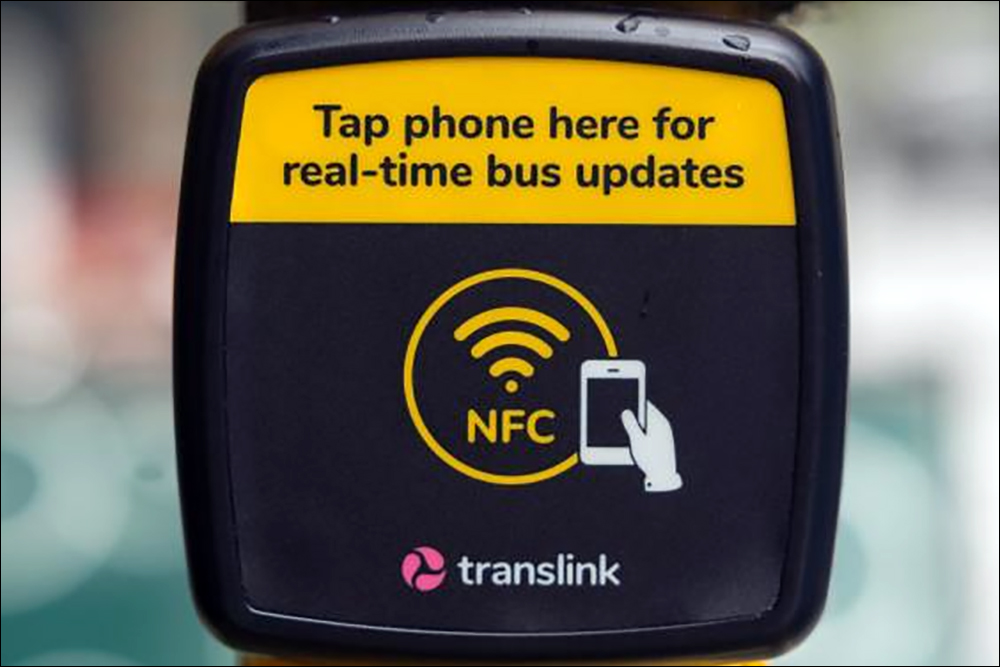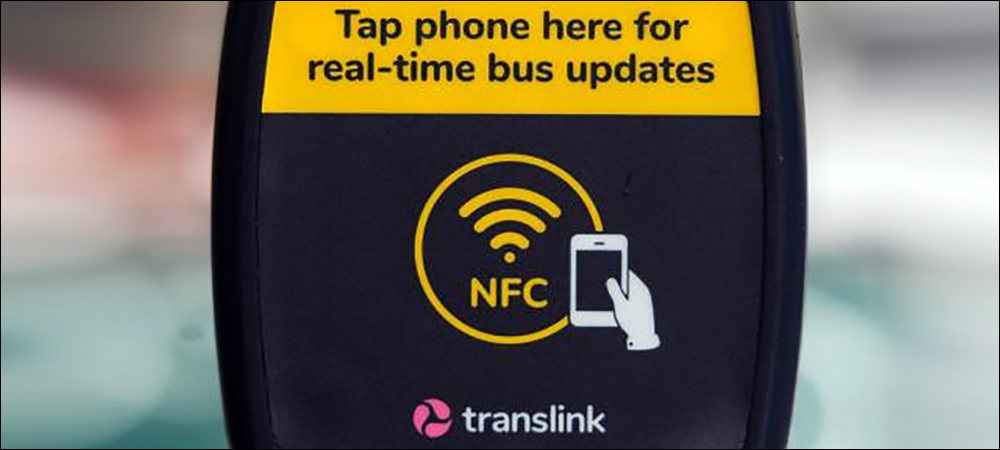Translink, the public transit agency for the Australian state of Queensland, is rolling out a Near Field Communication (NFC) solution that allows bus riders to access schedules and route information, as well as track buses related to each stop, by tapping their smartphone against posted NFC tags. Once fully deployed, the solution will consist of 15,000 NFC-tagged bus stops throughout Queensland.
Translink expects hundreds of thousands of passengers to use the technology to access bus information while waiting at stops. The goal is to make the rider experience faster and more convenient, and to present accessible information to those with disabilities. Approximately 8,000 individuals have used the system so far, and that number is growing as the technology is rolled out. In the long run, the solution might also be used for ticketing for both bus and ferry services within the state.

Translink passengers can use NFC technology to access bus information at stops.
Translink, part of the Queensland Government Department of Transport and Main Roads, is responsible for buses, trains, ferries and trams. It already offers a contactless fare-payment card called a Go Card, which requires passengers to touch it to a reader onboard a bus or train at the start and end of each journey, as well as when transferring between services. The fare is automatically calculated based on the difference between the zones at the beginning and end of a traveler’s journey.
The latest NFC offering is intended to deliver information about buses, without requiring passengers to access websites or type in specific buses to gain the information they need. The battery-free NFC tags transmit at 13.56 MHz, are compliant with ISO 14443, and are installed where passengers congregate at stops. The data they can access includes route, timetables, service disruptions and real-time information based on buses serving each stop, according to Sally Stannard, Translink’s deputy director general. The technology is being installed at all urban bus stops across Queensland during the coming months.
How the System Works
Those using the system “will be able to quickly access up-to-date information at bus stops with just a tap of their smartphone,” says Mark Bailey, Translink’s minister for transport and main roads. “Similar to the no-contact systems we see at restaurants, where you can tap your phone on an icon and view the menu, this new tech shows that we want to make the public transport experience even easier.”

Sally Stannard
Deployment of the NFC solution throughout Queensland follows a similar rollout by Translink in Brisbane in which 2,000 bus stops have been equipped with the technology. Tags need to be installed at 15,000 stops, so Translink has hired a network of local businesses to mount them at bus shelters and other available infrastructure at bus stops. Translink expects the NFC solution to be made available in all regions by March 2023.
Each tag has a unique ID number encoded on it, which is linked in software to a specific corresponding bus stop. Information about buses that access that stop is automatically provided to those accessing data via the tag. A rider does not require an app to access the bus information. When they arrive at their nearest bus stop, they can simply bring their smartphone within a few centimeters of the Translink NFC tag, as long as the phone’s NFC functionality is turned on.
Customers using Apple iPhone devices can hold the top rear of their phone to the tag in order to scan it, while those using Android-based phones can hold the back of their phone to the tag. To access the data, users typically must hold the phone within close proximity for a few seconds. There is also the option for customers to scan a QR code, which is located on printed timetables at the bus stops.
Supporting Disabilities, Non-English Speakers
Phones equipped with NFC technology can read the tag ID linked to a given location. The phones will then open the related website where bus data is located. That information can include buses destined to arrive at that stop, when this will occur, and GPS data indicating the bus’s location at any given time. In that way, passengers can know when the next bus will arrive, as well as ascertain if any issues may be affecting service, such as traffic-related delays.

Mark Bailey
The system is designed to provide not only rider convenience, Stannard says, but also information to those with challenges related to visual impairments, or who are not English speakers. Visually impaired users can either view data on their screen in large format or hear audio details. If they do not speak English, they can view that information translated in their native language.
While the system has proven to work well in Brisbane, Bailey says, the latest installation is the largest of its kind in that area. “It’s going to be a big job,” he states, “with more than 15,000 bus stops set to be enabled statewide, but it’s a job we’re excited to do to make transport even easier.” As soon as each NFC tag is put in place at a bus stop, it is brought into the system and made available for riders. “We can see from the data that people are intuitively using the system.”
The technology is part of a larger effort to modernize transit and take advantage of the latest technologies to drive reliability, efficiency and data access for passengers, Bailey explains. “Leveraging new technology is a key priority of the Palaszczuk Labor Government,” he says, referring to Annastacia Pałaszczuk, Queensland’s current premier, “as we deliver better services and support good jobs in new industries.
Expanding to Smart Ticketing
Other technology improvements include the continued rollout of smart ticketing on train lines across southeast Queensland, following a trial of the solution on the Gold Coast Light Rail network in December 2020. When it comes to ticketing options, Bailey says, “We plan to start smart-ticketing trials on buses and ferries from early next year, with customers able to pay for public transport with a contactless credit card, debit card, smartphone or smart watch, on any mode of public transport across the state, by the end of 2023.”
The solution, according to Translink, provides an alternative to the contactless Go Card, though the latter will continue to be accepted. Several smart-ticketing trials are already underway on the Gold Coast Light Rail, as well as between some key rail stations. As part of the trial, users can tap their contactless credit card, or an NFC-enabled smartphone, watch or other smart device, to pay the same adult Go Card fare without having to purchase a card.
Community response to the Brisbane NFC trial was overwhelmingly positive, Stannard reports, with the majority of surveyed customers describing the NFC solution as easy to use and something they would utilize regularly. The trial was conducted throughout a three-month period in 2020 at several high-traffic bus stops. As the technology has been deployed across Queensland, Translink has recorded more than 23,000 scans in total, from approximately 8,000 unique users, and that number is expected to rise.
Key Takeaways:
- At least 8,000 unique users have begun accessing NFC data about buses at their local stops in Queensland, Australia.
- The next phase will be to enable ticketing with NFC taps so passengers on buses and ferries can more easily purchase ride access without having to search for websites.


